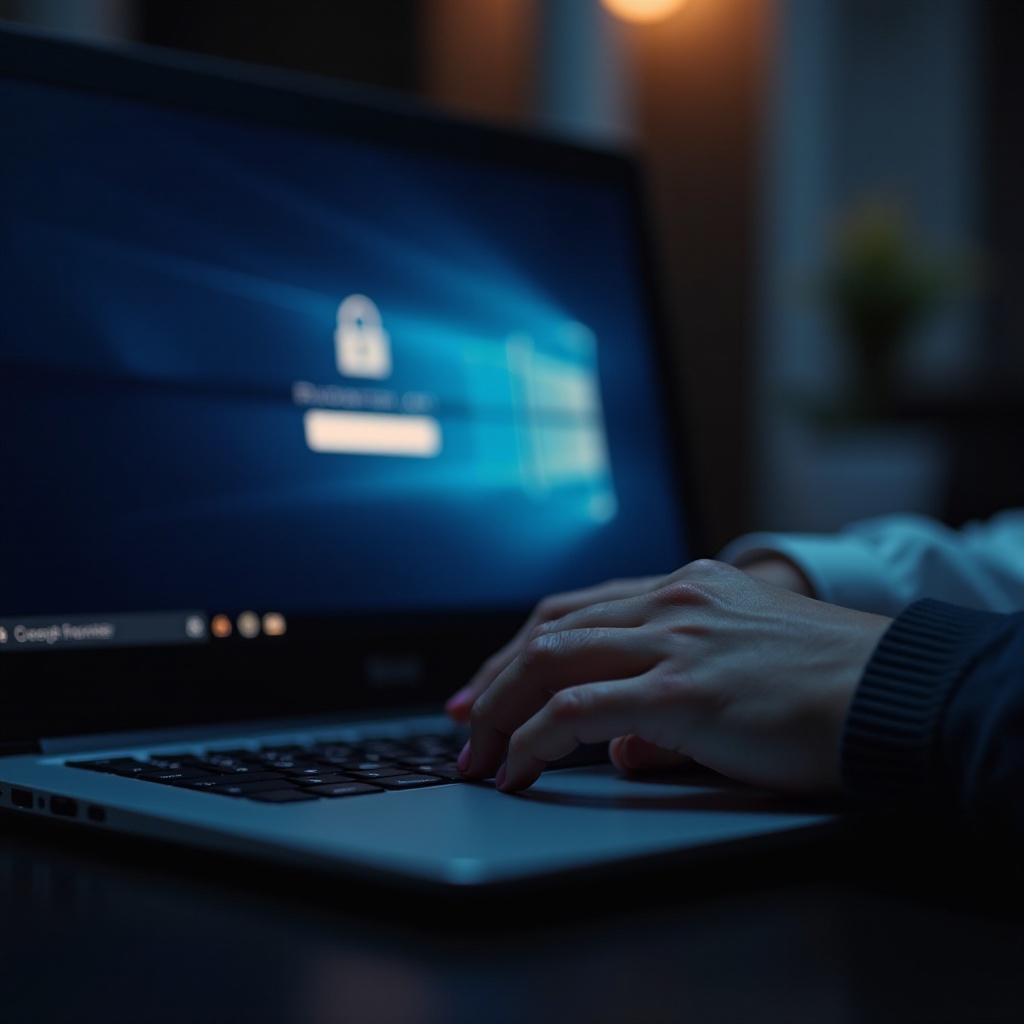Introduction
In today’s digital age, laptops are not just devices but vaults of personal and sensitive information. Setting a password is an essential step in shielding this data from unauthorized access and ensuring privacy. This guide will provide you with step-by-step instructions to set up a password on both Windows and macOS laptops. No matter your technical expertise, knowing how to create a robust and memorable password is crucial for maintaining digital security.

Understanding the Importance of Laptop Passwords
Passwords are integral to laptop security, acting as the first barrier against unwanted access to your files and applications. A strong password can prevent devastating breaches, protecting against identity theft and data loss. Crafting a password might sound straightforward, but it involves more than just selecting a memorable word or phrase. Evaluating the strength and complexity of your passwords is vital to maintaining a secure digital environment.

Setting a Password on Windows Laptops
Creating a secure password on a Windows laptop takes just a few minutes with the right steps. It begins with accessing the appropriate system settings to ensure all modifications are performed correctly.
Accessing Windows Security Settings
Start by clicking the Start button. From there, select the ‘Settings’ gear icon, navigate to ‘Accounts,’ and choose ‘Sign-in options.’ This section is your gateway to managing all sign-in credentials linked to your laptop.
Creating and Changing Your Password
Within the Sign-in options, locate the ‘Password’ section. Click ‘Add’ to set a new password or ‘Change’ if you wish to update an existing one. You’ll need to input your new password twice to confirm it, completing the setup.
Using a Password Hint
Windows allows you to add a password hint, which can be a useful memory aid. Ensure that the hint is unique enough to jog your memory without giving away your password to others.

Setting a Password on macOS Laptops
For macOS users, the process is slightly different but equally effective. Follow these steps to secure your macOS with a robust password.
Navigating System Preferences
Click on the Apple menu and head to ‘System Preferences.’ In this menu, click on ‘Users & Groups’ to manage the accounts on your laptop.
Adjusting Security & Privacy Settings
Under Users & Groups, select your user account and click on the ‘Change Password’ button. Enter your current password and your new one twice for confirmation. You can add a helpful password hint in the ‘Password Hint’ field.
Enabling FileVault for Enhanced Security
For enhanced security, consider activating FileVault, which encrypts your hard drive. To proceed, open ‘Security & Privacy’ in System Preferences, select the ‘FileVault’ tab, and click ‘Turn On FileVault.’ Follow through the prompts to secure your data comprehensively.
Tips for Creating a Strong and Secure Password
Crafting a robust password enhances your laptop’s security. Here are some effective strategies.
Characteristics of a Strong Password
A strong password typically has a length of 8-12 characters and includes a mix of uppercase, lowercase letters, numbers, and symbols. Avoid predictable choices like ‘123456’ or simply ‘password.
Common Mistakes to Avoid
Steer clear of using easily accessible personal details like your name or birthday in your passwords. Consistently using the same password across various platforms or storing passwords in unprotected files is also inadvisable.
Utilizing a Password Manager
Password managers can securely store and generate complex passwords, relieving you from the hassle of remembering each one. They facilitate using unique passwords for all your accounts, boosting security.
Additional Security Measures
To bolster your laptop’s security, consider implementing these additional safety measures beyond a strong password.
Implementing Two-Factor Authentication
Two-Factor Authentication (2FA) adds another layer of security by requiring an extra form of identification, often a mobile device, ensuring that even if your password is compromised, unauthorized access remains blocked.
Exploring Biometric Security Options
For laptops equipped with biometric features, like fingerprint or facial recognition, these can add both convenience and an additional security level, as they are biologically unique to each user.
Troubleshooting and Password Recovery
Even with all precautions, you might occasionally forget your password. Here are the recovery options to get back into your systems.
Steps for Password Recovery on Windows and macOS
On Windows, a password reset disk or Microsoft account recovery can be employed. On macOS, your Apple ID or recovery key is useful during the login phase for password resets.
Avoiding Password Reset Scams
Be cautious about unsolicited password reset emails or messages which might be phishing attempts. Always verify the source before engaging with password reset requests.
Conclusion
Setting a password for your laptop is an essential step in safeguarding your data from unauthorized access. By adhering to the guidelines above and applying a robust mix of security practices, you can rest assured that your digital life is well-protected. Remember, a strong password is just the beginning; complement it with additional security options for comprehensive protection.
Frequently Asked Questions
How can I create a strong yet memorable password?
Combine unique words or phrases with numbers and symbols. Use mnemonics or short sentences that are meaningful to you.
What should I do if I forget my laptop password?
Use the recovery options available for your operating system, such as a password reset disk for Windows or your Apple ID on macOS.
Are biometric security options safer than traditional passwords?
Biometric options add convenience and security but should not replace strong passwords entirely. Use them alongside robust password practices for optimal security.
